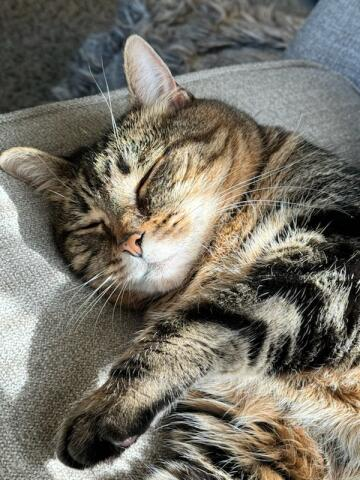cross-posted from: https://lemm.ee/post/32128978
Switching from Endeavour OS to Nobara
Hi all, I’ve been having issues with my favorite games on EndeavourOS Linux. Also, on top of that, an update the other day deleted my whole plasma desktop and left me with a skeleton of SDDM. I got it fixed, but some things are still wonky. I’m honestly getting tired of maintaining it and I just want something that just works for my video games and some coding. Nobara sounded awesome after some research. I do have a couple of questions for you all before switching:
Is Nobara atomic? Immutable? Or whatever those distros are called.
I have my /root, /home separate each in their own drive, plus a 3rd one for my steam and other games. Since I’m coming from Arch and I’ll only be formatting my root drive, what folders/files will I need to remove from my /home directory after switching to Nobara so I don’t have issues?
Since I separate drives for everything, I’ll be doing a manual partitioning when I install Nobara, and will be choosing btrfs for my /root so I can do snapshots with timeshift. My question is, does Nobara set up the subvolumes automatically for me when I do manual partitioning, or do I need to set them up myself?
How hard is it to set up snapshots in grub?
Or does Nobara have a back up tool already that already does snapshots?
Thank you.


1. No
2. You’ll need to delete your
~/.config,~/.local,~/.cache( and maybe~/.var, which is your Flatpak app data/cache). Might be best to rename your.configinstead of outright deleting it, just in case you need to restore some old config.3. It’s been a while since I used Nobara, but IIRC it only creates the default
@and@homesubvolumes.4,5. Nobara should have Timeshift installed by default.
Honestly though, since you said that you want something that “just works” for gaming and coding, you should just get Bazzite. Bazzite is an immutable distro and everything is set up to work out-of-the-box. You never have to worry about broken updates again due to atomic updates and image rollbacks. You can directly boot from a previous image from GRUB (no need to restore it first), pin known good images to your GRUB, and even rollback to any previous image via the web (upto 90 days) - all with just a single command. And for coding, you can easily set up a Distrobox container to install all your tools and IDEs etc, it integrates well with the host OS so you won’t even notice/care that it’s inside a container.